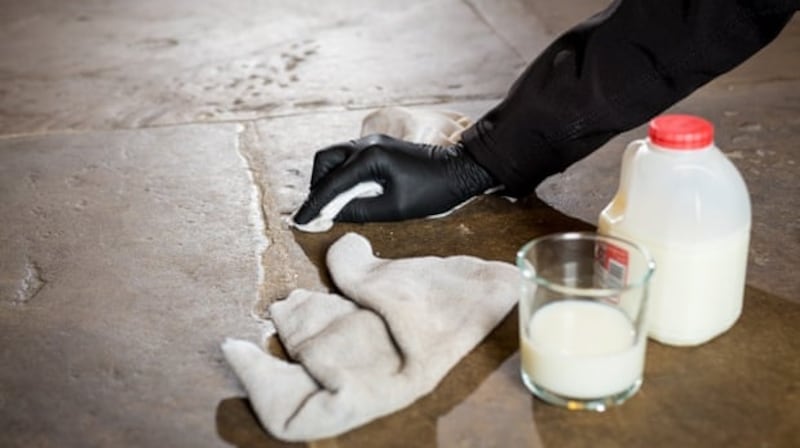Do consider using skimmed milk to wash a flagstone floor, or fresh white bread on wallpaper, heritage experts confidently advise. But please do not follow the advice of housekeepers who used potatoes to clean oil paintings or Worcestershire sauce to polish the silver.
As some people prepare for a spring clean, English Heritage, a charity that manages more than 400 historic monuments, buildings and palaces, has revealed some of its best historical cleaning tips – and the worst.
There is much to be learned from people who had no choice but to use what was readily available, says Amber Xavier-Rowe, head of collections conservation at the charity. “Although we may not recommend some of the more bizarre tips, housekeepers of the past were often spot on with their methods, despite relatively little scientific knowledge.”
There are many cleaning techniques from the past that are difficult to recommend, for example, sprinkling your carpet with damp tea leaves before sweeping
A good example, she says, is milk on a nonporous stone floor, which has been officially proven after conservation teams experimented during the coronavirus lockdown on the floors of Brodsworth Hall, a Victorian country house near Doncaster.
Full-fat, low-fat and skimmed milk were all tried, with the last of the three coming out top. “It is quite subtle, but it comes up really nice, and we will probably end up using it in the future,” says Xavier-Rowe.
She describes applying the milk as a hands-and-knees job, rubbing it in and leaving it stone by stone, rather than sloshing it all over with a mop. “The other thing is, it doesn’t smell or attract any mould.”
Wiping dirty wallpaper with white bread is also demonstrably impressive, she says. “It does work, although it does need to be fresh white bread – stale bread would be too abrasive. I tried it with some of my sourdough, and it was surprisingly effective. It’s very gentle.”
Xavier-Rowe says English Heritage teams would not be adopting the method themselves, however. “You do get crumbs, so it’s not superpractical for us, to be honest. But if you can’t get hold of the stuff we use then it’s perfectly fine. You’ve just got to vacuum your crumbs up.”
Other cleaning tips people can use include applying a soft chamois leather rather than glass cleaner to give a shine to mirrors, and rejuvenating waxed timber floors with a mixture of beeswax and turpentine.

But there are many cleaning techniques from the past that are difficult to recommend, Xavier-Rowe says. Sprinkling your carpet with damp tea leaves before sweeping, for example.
Another dubious method English Heritage advises against is for cleaning oil paintings: rub a freshly cut slice of potato dampened in cold water over the picture, then wipe off the lather with a damp sponge, finish with lukewarm water, and dry and polish with an old silk handkerchief.
Similarly, do not use salt and Worcestershire sauce to polish silver, or salt and lemon on copper pans, and do not think you can clean mould from paintings by leaving them in direct sunlight.
English Heritage has released a video showing some of the tips. It is fronted by its Victorian YouTube star Avis Crocombe, who, played by the historical interpreter Kathy Hipperson, has become an internet sensation over the past year, showing viewers how to make dishes including cucumber ice cream and Devonshire squab pie, a mix of mutton and apples.
The tips come as English Heritage conservation teams continue work on their annual top-to-bottom spring cleans at properties, set to reopen on May 17th. This involves everything from cleaning silver and copper to washing chandeliers and lifting and rolling carpets. “There may be no visitors, but the dust never stops,” says Xavier-Rowe. – Guardian

















